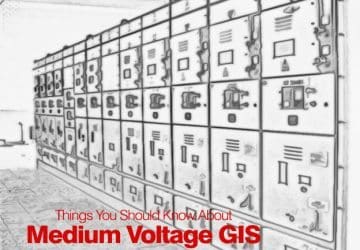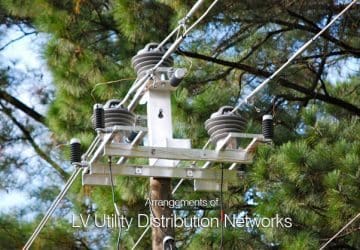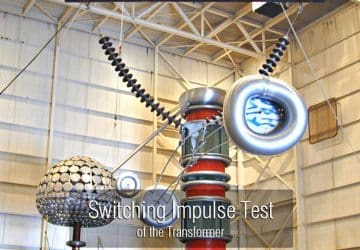Things You Should Know About Medium Voltage GIS
Environmental Concerns Safety Concerns Special Handling Procedures Installation Concerns Operation and Maintenance Concerns End of Life / Recycling Concerns Conclusion Medium voltage (5-38 kV) gas insulated switchgear (GIS) differs greatly from the medium voltage AIS – Air insulated switchgear commonly… Read more
Feb 20, 2013 | By Edvard Csanyi

Types and Applications Of Overcurrent Relay
Distribution systems are susceptible to overcurrent flow within its components. Overcurrent may arise from abnormal system conditions, including overloads and short-circuit failures, or from typical system conditions, such as transformer inrush current and motor initiation. Consequently, under typical system conditions,… Read more
Feb 01, 2013 | By Jignesh Parmar

High Voltage Substations Overview (part 2)
Continued from first part: High Voltage Substations Overview (part 1) Transformers are used for the transformation of high and medium voltage to low voltage, flanked by specific protective devices and control systems, which constitute the low voltage distribution substations. A… Read more
Jan 26, 2013 | By Emmanouil Angeladas

High voltage substations overview (part 1)
High voltage substations are interconnection points within the power transmission and distribution systems between regions and countries. Different applications of substations lead to HV substations with and without power transformers: Step up from a generator voltage level to a high voltage… Read more
Jan 25, 2013 | By Emmanouil Angeladas

What Is The Basic Insulation Level (BIL)
Insulation levels are designed to withstand surge voltages, rather than only normal operating voltages. Since the transmission & distribution lines and substation equipment are protected by surge arresters draining the surges rapidly before the insulation is damaged, the arrester must… Read more
Dec 03, 2012 | By Edvard Csanyi

Arrangements of LV Utility Distribution Networks (2)
Continued from the previous part: Arrangements of LV Utility Distribution Networks (1) In the past, an underground cable service or the wall-mounted insulated conductors from an overhead line service, invariably terminated inside the consumer’s premises, where the cable-end sealing box, the utility… Read more
Dec 01, 2012 | By Edvard Csanyi

Arrangements of LV Utility Distribution Networks
In European countries the standard 3-phase 4-wire distribution voltage level is 230/400 V. Many countries are currently converting their LV systems to the latest IEC standard of 230/400 V nominal (IEC 60038). Medium to large-sized towns and cities have underground… Read more
Nov 30, 2012 | By Edvard Csanyi

Steps to Ensure Effective Substation Grounding (Part 2)
Continued from previous article: Steps to Ensure Effective Substation Grounding (1) In previous technical article (part 1) was explained first five steps that will ensure a reliable, safe and trouble-free substation grounding system. Here we will explain the last six steps:… Read more
Nov 10, 2012 | By Edvard Csanyi

Steps to ensure effective substation grounding (Part 1)
An electrical substation is a critical resource in a power system. Safe operation of a substation calls for a properly designed and installed grounding system. A well-designed grounding system will ensure reliable performance of the substation over its entire service life. How does… Read more
Nov 09, 2012 | By Edvard Csanyi

Cable engineering in substations and power plants
Is it true that single core cable should be unarmored because eddy currents are induced in armor of single core cable which will cause additional losses? If true then why not three core cables also unarmored and why single core… Read more
Oct 22, 2012 | By Asif Eqbal

Testing and Commissioning of Current Transformer
This technical article is prepared to help the commissioning personnel effectively perform and carry out the testing and commissioning tasks on current transformers before taking the equipment to service condition. General testing procedures for the current transformers (CTs) described in… Read more
Oct 19, 2012 | By Edvard Csanyi

Switching Impulse Test of the Transformer
The switching impulse test is applied to confirm the withstand of the transformer’s insulation against excessive voltages occurring during switching. During the switching impulse voltage test, the insulation between windings and between winding and earth and withstand between different terminals… Read more
Oct 11, 2012 | By Edvard Csanyi

Fire-Fighting Precautions in Power Substation
The layout of the plant and the design of the building play a major part in reducing the spread of fire and the effect of explosions. For example, equipment and buildings should be arranged to have vents which rupture rather… Read more
Oct 09, 2012 | By Edvard Csanyi

Designing of HV Power Substation and Layout
Introduction Earthing and Bonding Substation Earthing Calculation Methodology (Earthing Materials) Layout of Substation Different Layouts for Substations (single busbar, mesh, 1 1/2 cb) Principle of Substation Layouts (spatial separation, maintenance zones) Components of a Substation (cbs, cts, isolators, insulation, transformers etc.) Substations are the… Read more
Oct 01, 2012 | By sprabakar22

Transformers Connected Directly to Generators
Power transformers connected directly to generators can experience excitation and short-circuit conditions beyond the requirements defined by ANSI/IEEE standards. Special design considerations may be necessary to ensure that a power transformer is capable of withstanding the abnormal thermal and mechanical aspects that… Read more
Sep 01, 2012 | By Edvard Csanyi


